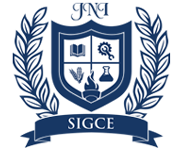First year Engineering is common to all branches which provide comprehensive and integrated studies of subjects in Engineering Mechanics, Applied Physics, App. Chemistry, Communication skill, Engg. Drawing, Applied Maths, Basic Electrical Engineering and Computer Programming. The main aim of these subjects is to develop the basic skills which are prerequisites to Engineering and Technology. This department has highly qualified and well experienced faculty members to make the students well versed with the engineering subjects. The faculty members conduct periodic tests, home assignments; tutorial, open book test etc. Continuous efforts are being taken by all the faculties to improve the performance of students.
Department Objectives
- To strengthen the fundamentals in Applied Sciences, Mathematics and Basic Engineering.
- To develop the ability to communicate effectively as technical professionals.
- To provide an environment for working effectively in groups.
- To create a good base for further engineering education.
Vision
To provide comprehensive requisite knowledge of applied sciences and basic engineering subjects to engineering students to strengthen their Mathematics, English basics and Soft skills
Mission
- To impart quality education in science, Mathematics, Mechanics, Drawing and Electrical engineering subjects
- To groom the students with flair towards hand on experience to solve real life problems.
- To acquaint the students with effective communication skills and provide them ample practice for improving their interpersonal skills.
- To inculcate discipline and moral values amongst the students.
| SEM I | SEM II |
|---|---|
| Applied Mathematics – I | Applied Mathematics – II |
| Applied Physics | Elective Physics(Physics for Emerging Fields OR Semiconductor Physics |
| Applied Chemistry | Elective Chemistry(Engineering Materials Environmental Chemistry and Non-conventional energy sources OR OR Introduction to Computational Chemistry) |
| Engineering Mechanics | Engineering Graphics |
| Basic Electrical & Electronics Engineering | Program Core Course( AI-ML,IOT,COMPUTER,AI-DS All Branches Common Data Structure, Mechnical Engineering:(Elements of Mechanical Engineering ) Electrical Engineering: (Elements of Electrical Systems ) |
| Professional and Communication Ethics | Social Science & Community Services |
| Engineering Workshop-I | Indian knowledge System |
| C Programming | Engineering Workshop-II |
| Induction cum Universal Human Values | Python Programming |
| Sr.No. | Date of Event | Name of Event | Link |
|---|---|---|---|
| 1 | 27/2/2025 | Expert Lecture on UHV | Click Here |
| 2 | 7th November, 2024 | Word Association | Click Here |
| 3 | 28th October, 2024 | Movie | Click Here |
| 4 | 23rd October, 2024 | Yoga Session | Click Here |
| 5 | 14th October, 2024 | Role Play | Click Here |
| 6 | 10th October, 2024 | Freshers | Click Here |
| 7 | 9th October, 2024 | Garba | Click Here |
| 8 | 4th October, 2024 | Orientation Day | Click Here |
| 9 | 30th September, 2024 | Creative Storytelling | Click Here |
| 10 | 22nd November, 2023 | Technical Session | Click Here |
| 11 | 8th November, 2023 | Yoga Session | Click Here |
| 12 | 15th September, 2023 | Engineers Day | Click Here |
| 13 | 29th August, 2023 | Orientation Day | Click Here |
Seminar on ‘Introduction to CATIA SOLIDWORKS & PROE for FE Mechanical Students
PLACE: Mumbai
Conducted Seminar on Introduction to CATIA SOLIDWORKS & PROE , in association with Institute of Engineers (India) on 29 March 2019, for FE mechanical engineering students
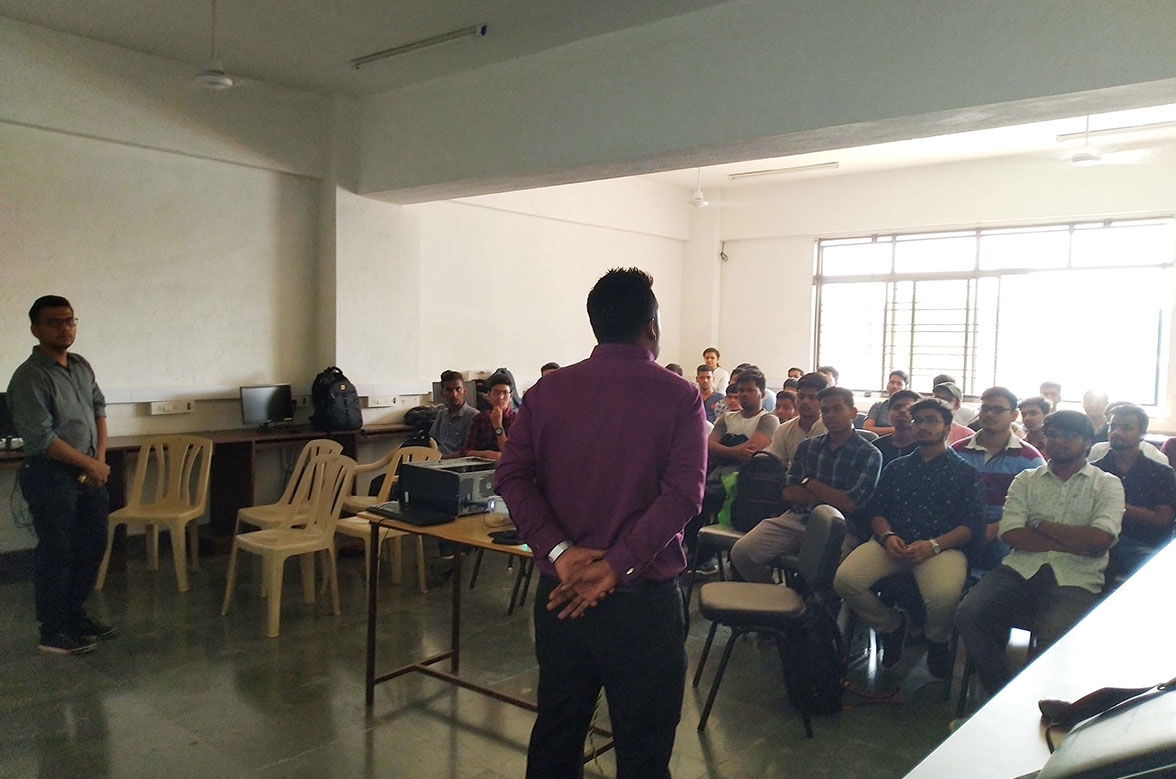

FE Visit to ACREX India 2019 Exhibition
PLACE: Mumbai
Acrex India 2019 is the South Asia’s Largest and Renown Exhibition on Refrigeration and Cold-chain, Air-Conditioning, Ventilation and Intelligent Buildings. This exhibition is organized by the ISHARE on 28th Feb to 2 March 2019 at Bombay Exhibition centre, Mumbai. FE mechanical students attended this exhibition on 1st March 2019 .This Exhibition gives student overall perspectives, working and updated information about Air-condition, and refrigeration. Different types of mechanical elements and equipments seen by the students. This exhibition will enhance students understanding about mechanical concepts and their practical applications .Students found this exhibition useful under the guidance of Dr. H.S.Dhanawade, Dr. A.S. Borkar and Prof. Rupali Jadhav.
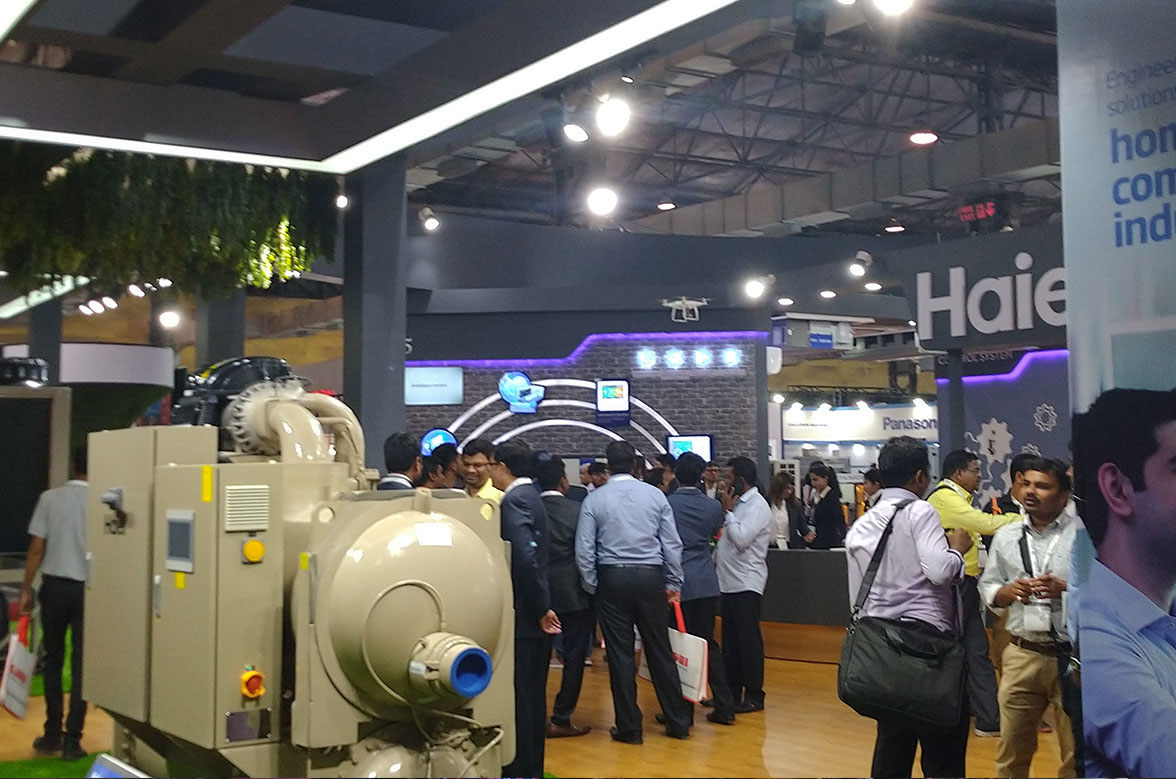
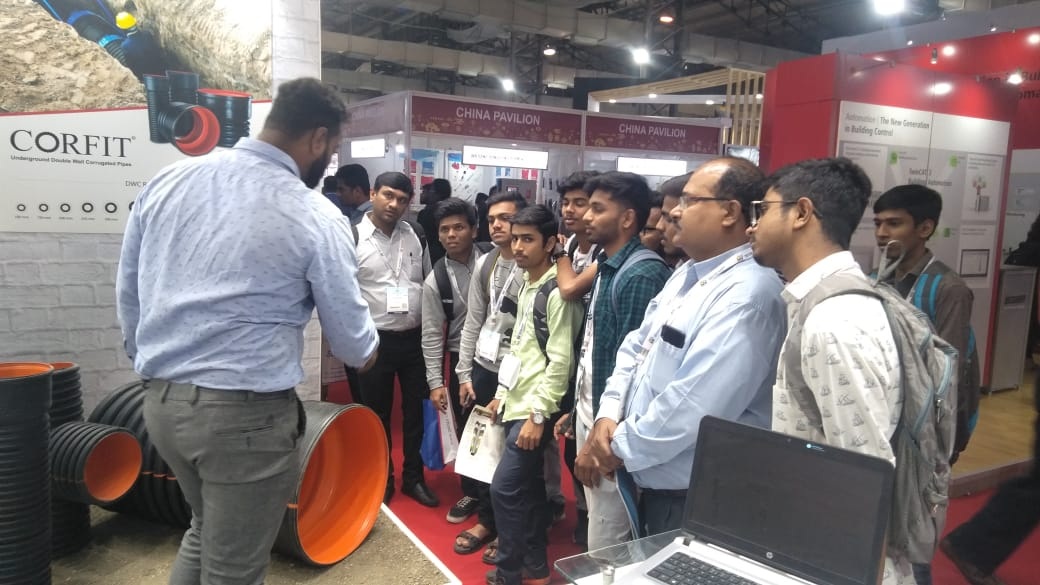
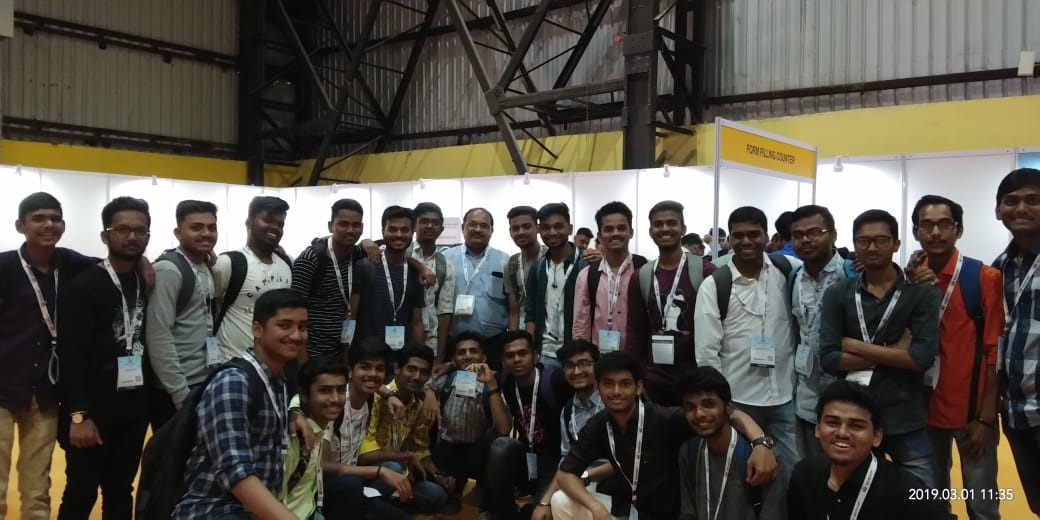
- Lab Name: Engineering Mechanics
Location of Laboratory:202
Lab in charge: Prof. Page A. V.
Details of Resources & Equipments:
Utilization of Laboratory: For F.E. All.
Engineering Mechanics is one of the important subjects which deals with mechanics of various structures and components. The results determined at laboratories ensure safety, strength, rigidity, reliability and behaviors of mechanical beams, trusses, joints and other technological aspects. It is thus significant to acquire sound theoretical knowledge coupled with practical inputs observed at laboratories. As per the requirement of the revised syllabus, lab is spacious and well equipped with different apparatus such as force table, beam reaction, bell crank leaver friction, flywheel, compound pendulum etc.

- Lab Name: Engineering Drawing
Location of Laboratory: 202
Lab in charge: Prof. Page A. V.
Details of Resources & Equipments:
Utilization of Laboratory: For F.E. All.
Engineering Drawing is the language of engineers. It is a starting point of all engineering branches. There is well equipped Drawing Hall which is fully spacious, illuminated and ventilated makes pleasant condition for students. All necessary and required Drawing charts and models are available in Engineering Drawing Hall. As per the requirement of revised syllabus, separate AutoCAD lab with recent version of AutoCAD software is established.

- Lab Name: AutoCAD Lab
Location of Laboratory: 615
Lab in charge: Prof.Videet Kamble
Details of Resources & Equipments:
Utilization of Laboratory: For F.E. All.
AutoCAD is the most widely used modeling package in today’s industrial development, for preparing drawings of all engineering components, designing mechanical engineering parts and modeling civil engineering structures. We explore students’ basic knowledge of engineering drawing with the help of computer. We conduct practical to perform two dimensional views, isometric views, lettering, dimensioning & sectional views etc
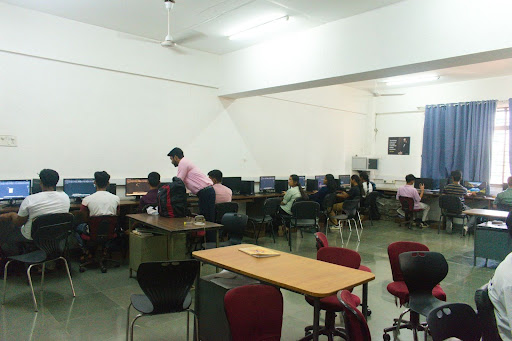
.
- Lab Name: Applied Chemistry
Location of Laboratory: 102
Lab in charge: Dr. Sandhya Mathur
Details of Resources & Equipments:
Utilization of Laboratory: For F.E. All.
With an era of change, Engineering chemistry focuses on giving hands on expertise with leading edge technologies & Global perspective on the effect of that technology. Engineering chemistry department has been well established to make the students proficient in subject. The subject is common for all first year bachelor’s degree students. Engineering chemistry laboratory is well equipped with latest apparatus consisting of Redwood viscometer, Pensky Marten’s and Able’s Flash Point apparatus which can be used for testing lubricating oil to determine viscosity, flash point and fire point. Flue gas analysis of fuels can be carried out by using orsat apparatus to determine the % of CO2, O2, CO in the combustion product. PH of the unknown samples can be determined using PH -1 Meter.
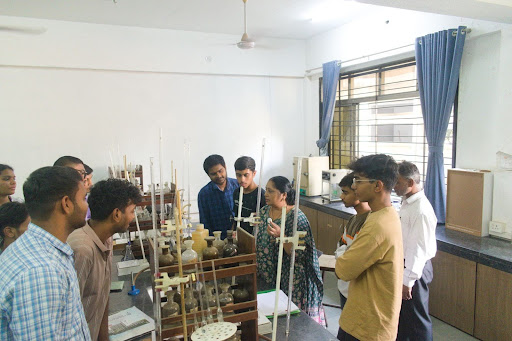
- Lab Name: Basic Electrical & Electronics Engineering
Location of Laboratory: 201
Lab in charge: Prof. D.D.GOTE.
Details of Resources & Equipments:
Utilization of Laboratory: For F.E. All.
BEEE Lab is well equipped with Kits for all the experiments in the syllabus. The lab is equipped with required measuring instruments like Ammeters, Voltmeters, multi meters & Watt meters. The Lab is also equipped with all required components like resistors, inductors, capacitors transformers motors & load banks. We have well experienced technical staff. Students perform following experiments under the guidance of faculty.
1. Mesh and Nodal analysis.
2. Verification of Superposition Theorem.
3. Verification Thevenins Theorem.
4. Study of R-L series and R-C series circuit.
5. R-L-C series resonance circuit
6. R-L-C parallel resonance circuit.
7. Relationship between phase and line currents and voltages in 3″ phase System (star & delta)
8. Power and phase measurement in three phase system by two wattmeter method.
9. O.C. and S.C. test on single phase transformer
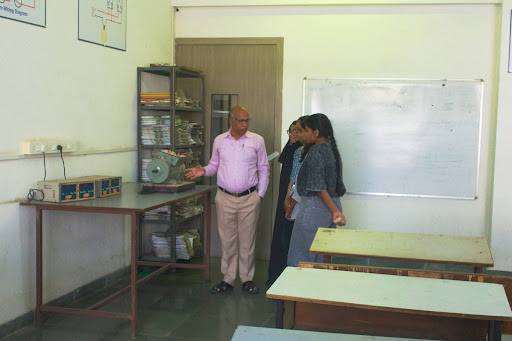
- Lab Name: Professional and Communication Ethics (Language Lab)
Location of Laboratory: 106
Lab in charge: Dr.Preeti Kaushal
Details of Resources & Equipments:
Utilization of Laboratory: For F.E. All.
Language Lab is an equipped setting where language skills are polished. Language is always learned by the basic skills i.e. LSRW, for developing the speaking skills of students. They need to be exposed & given firsthand experience of listening to the ideal language user. Language lab. Provides this opportunity for the students.
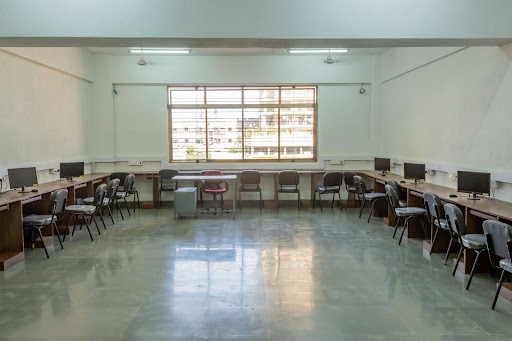
- Lab Name: Applied Physics
Location of Laboratory: 103
Lab in charge: Prof. D. S. Gangurde
Details of Resources & Equipments:
Utilization of Laboratory: For F.E. All.
The Engineering Physics Laboratory is well equipped with latest apparatus of fiber optics, high quality cathode ray oscilloscope, function generator, LASER beam, ultrasonic generator models of crystal cells, Newton ring’s apparatus and cathode ray tube to measure e/m ratio.
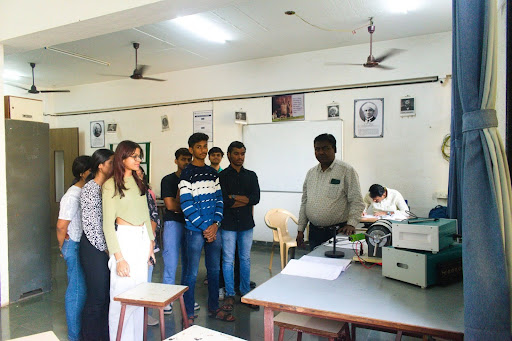
- Lab Name: C Programming
Location of Laboratory: 105
Lab in charge: Prof.Jayashri Mahale.
Details of Resources & Equipments
Utilization of Laboratory: For F.E. All.
As per the requirement of today’s industrial development, we explore students’ basic knowledge of Programming with the help of C language. C is a high-level structured oriented programming language. It is mainly developed as a system programming language for operating systems. We conduct practical projects on the construction of Algorithm and flowchart, Fundamentals of C-Programming like Functions, Arrays, String, Structure, Union, and Pointer etc. For implementation of above concepts with the help of Dev C++ IDE software on windows.

- Lab Name:Engineering Workshop
Location of Laboratory: 614
Lab in charge: Prof.Aditya Kakkad
Utilization of Laboratory: For F.E. All.
Objective:
To familiarize with the basic manufacturing processes and to study the various tools and equipment used, hands-on training is given in different sections. Essentially students should know the labour involved, machinery or equipment necessary, time required to fabricate and also should be able to estimate the cost of the product or job work.
DETAILS OF RESOURCES & EQUIPMENTS:
The subject workshop technology has become increasingly important to the engineers engaged in the production of various types of machines and tools. The ability to work skillfully with hands, can be developed more readily and accurately, when the work to be performed in the shop floor it is necessary for students to understand both in practical and theoretical aspects. Spacious, fully ventilated workshop includes the Fitting section, Smithy section, Carpentry section, welding section, Machine shop, Sheet metal working and Electric wiring etc.
Fitting
The term fitting, is related to assembly of parts, after bringing the dimension or shape to the required size or form, in order to secure the necessary fit. The bench work and fitting plays an important role in engineering. Although in today’s industries most of the work is done by automatic machines which produces the jobs with good accuracy but still it (job) requires some hand operations called fitting operations.
Carpentry
Carpentry is the process of shaping Timber, using hand tools. The products produced are used in building construction, such as doors and windows, furniture manufacturing, patterns for moulding in foundries, etc. Carpentry work mainly involves the joining together of wooden pieces and finishing the surfaces after shaping them
Blacksmithy
Blacksmithy or Forging is an oldest shaping process used for producing small articles for which accuracy in size is not so important. The parts are shaped by heating them in an open fire or hearth by the blacksmith and shaping them through applying compressive forces using a hammer.
Welding
Welding is a process for joining two similar or dissimilar metals by fusion. It joins different metals/alloys, with or without the application of pressure and with or without the use of filler metal. The fusion of metal takes place by means of heat. The heat may be generated either from combustion of gases, electric arc, electric resistance or by chemical reaction.
The welding is widely used as a fabrication and repairing process in industries. Some of the typical applications of welding include the fabrication of ships, pressure vessels, automobile bodies, off-shore platforms, bridges, welded pipes, sealing of nuclear fuel and explosives, etc.
Sheet metal work
Sheet metal work has its own significance in the engineering work. Many products, which fulfill the household needs, decoration work and various engineering articles, are produced from sheet metals. Common examples of sheet metal work are hoopers, canisters, guards, covers, pipes, hoods, funnels, bends, boxes etc. Such articles are found less expensive, lighter in weight and in some cases sheet metal products replace the use of castings or forgings.
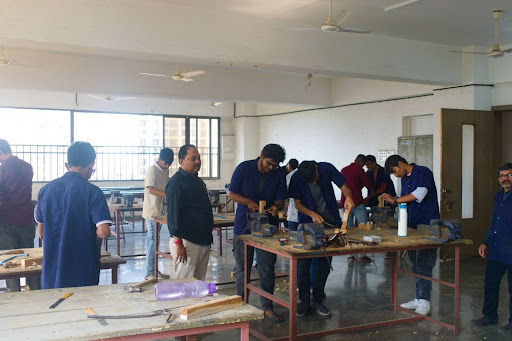
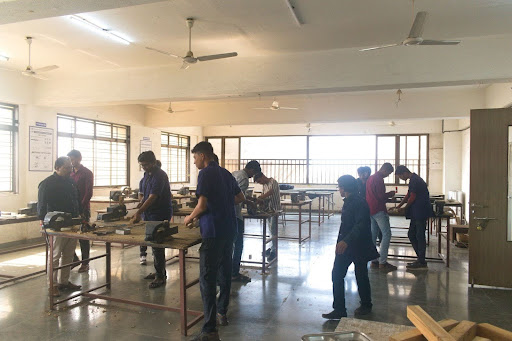
| Date | Notice Descritpion | Link |
|---|---|---|
| 12/03/2025 | Parent Teacher Meeting | Click Here |
| 27/12/2024 | Notice regarding commencement of II Sem | Click Here |
| 07/03/2025 | Seminar on occassion of womens day | Click Here |
